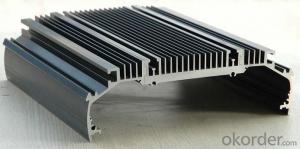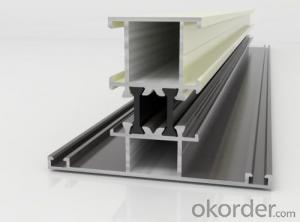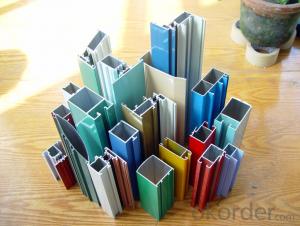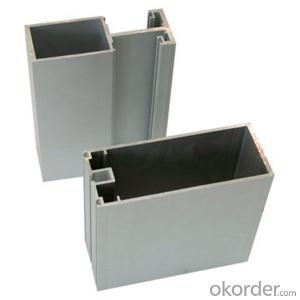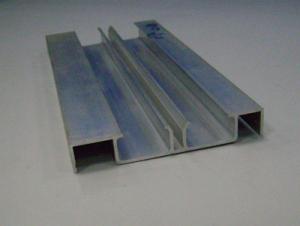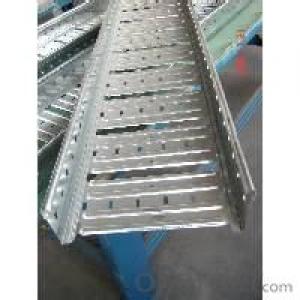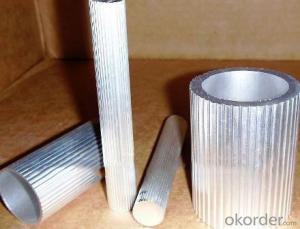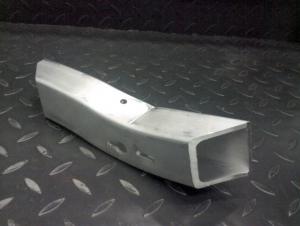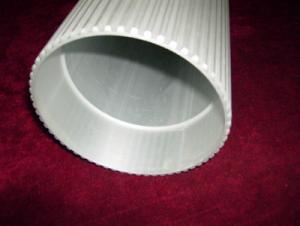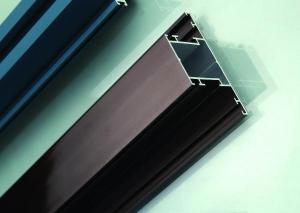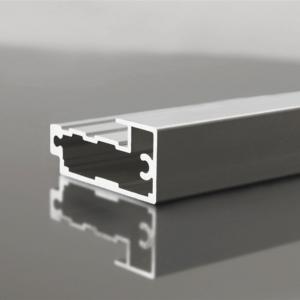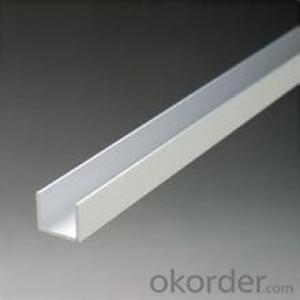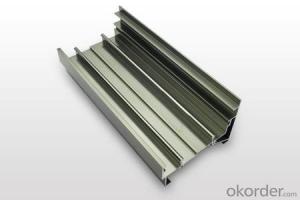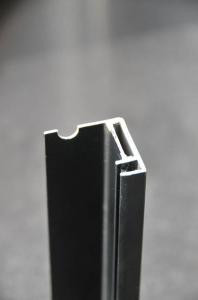Aluminum Extrusions Profiles - Aluminium Profile
- Loading Port:
- China Main Port
- Payment Terms:
- TT OR LC
- Min Order Qty:
- -
- Supply Capability:
- -
OKorder Service Pledge
OKorder Financial Service
You Might Also Like
Packaging & Delivery
| Packaging Detail: | 1. Plastic bag or EPE wrapped for each separate profile; 2. 10 or more pieces packed in a paper box; 3. Wooden case or steel rack is available; 4. Customized packing is acceptable. |
| Delivery Detail: | 20-25 days after order confirmed |
Specifications
aluminium profile
Material:6063,6061,T5/T6
Mill finish,anodized,powder coated
Cut,punch,drill,mill
ISO9001,SGS,ROHS,TUV
aluminium profile
1. Material: 6063,6061,6060,6005,6005A,etc.
2. Temper: T5 or T6
3. Finish: Mill finish, anodizing,powder coating, electrophoresis, wooden transfer or pvdf/carbon-flouride coated, polishing,brushing,sand blasting
4. Various colors: Silver,bronze,black,gold,blue,grey,champagne,bright,etc.
5. Machining: Cutting,punching,drilling,tapping,milling,bending,welding,CNC etc.
6. Various in styles and sizes:
A). Aluminum alloy bars: ranging from 1000 series to 7000 series, normal material such as 6063,6005,6061,6060, special materials such as 6082, 7005, 7075 etc.
B). Aluminum profiles:
---General aluminum profiles (various shapes of pipes/tubes, angles, T or U shapes etc.)
--- Industrial aluminum profiles ( TV frames, Rim for bicycles and motorcycles, Heat sink profiles, Furniture, Ladder, Guide Rail, Leisure materials, Shower Room, Solar Module Frame, Motor Shell, Pipeline Integration etc.)
--- Construction aluminum profiles ( Aluminum doors&windows, JB8A8, JB828 and JB828 Sliding Windows, JB50A Door Window, Curtain Wall Frame etc.)
7. Certification: ISO9001,SGS,ROHS,GMC,TUV
8. Strong technical development ability, can provide high intensity and high ductility aluminum profiles, to meet customers' different requirements.
9. OEM service available, customized design available
- Q: This question asks if aluminum profiles can be used in outdoor settings and seeks an explanation for their suitability.
- <p>Yes, aluminum profiles can be used for outdoor applications. They are suitable for outdoor use due to their high resistance to corrosion, which is a result of the natural oxide layer that forms on aluminum when exposed to air. This layer protects the aluminum from further oxidation and damage. Additionally, aluminum profiles are lightweight, strong, and can withstand various weather conditions, making them ideal for applications such as outdoor furniture, construction, and signage. Their durability and low maintenance requirements also contribute to their popularity in outdoor settings.</p>
- Q: Can aluminum profiles be used in lightweight construction applications?
- Aluminum profiles are definitely applicable in lightweight construction. They possess a lightweight and versatile nature that brings numerous advantages to construction projects. With a high strength-to-weight ratio, structures can be built with less material yet still maintain strength and durability. This makes aluminum profiles an ideal choice for lightweight construction where weight reduction is crucial. Various construction projects, including building facades, interior partitions, roofing systems, and structural frameworks, commonly utilize aluminum profiles. They are particularly favored in industries such as aerospace, automotive, and marine where reducing weight is of utmost importance. Additionally, aluminum profiles exhibit excellent resistance to corrosion, making them suitable for outdoor and high-moisture environments. Their high malleability allows for easy fabrication into different shapes and sizes, enabling customized designs and simple installation. Moreover, aluminum is an eco-friendly material as it can be recycled infinitely without compromising its properties. To sum up, the widespread use of aluminum profiles in lightweight construction stems from their lightweight nature, strength, durability, corrosion resistance, malleability, and environmental benefits.
- Q: Are there any specific cleaning and maintenance instructions for aluminum profiles?
- Yes, there are specific cleaning and maintenance instructions for aluminum profiles. Here are a few guidelines to follow: 1. Regular cleaning: Aluminum profiles should be regularly cleaned to maintain their appearance and prevent corrosion. Use a mild soap or detergent mixed with water to clean the surface. Avoid using abrasive cleaners or steel wool as they can scratch the aluminum. 2. Avoid harsh chemicals: Harsh chemicals can damage the protective coating on the aluminum profiles. Avoid using strong acids, alkaline cleaners, or solvents for cleaning purposes. 3. Rinse thoroughly: After cleaning, make sure to rinse the aluminum profiles thoroughly with clean water. This will remove any residue from the cleaning solution and prevent streaking. 4. Dry thoroughly: After rinsing, dry the aluminum profiles completely using a soft cloth or towel. Moisture left on the surface can lead to corrosion, so it's important to ensure the profiles are completely dry. 5. Lubrication: If the aluminum profiles have moving parts or hinges, it's recommended to lubricate them regularly to ensure smooth operation. Use a lubricant specifically designed for aluminum to avoid any adverse effects. 6. Protective coatings: Some aluminum profiles come with protective coatings, such as anodized or powder-coated finishes. These coatings provide an extra layer of protection against corrosion and should be maintained as per the manufacturer's instructions. 7. Avoid abrasive cleaning tools: When cleaning aluminum profiles, avoid using abrasive cleaning tools such as brushes or scouring pads. These can scratch the surface and damage the protective coating. It's important to note that specific cleaning and maintenance instructions may vary depending on the type and finish of the aluminum profiles. Therefore, it's always advisable to refer to the manufacturer's guidelines for the best cleaning and maintenance practices for your specific aluminum profiles.
- Q: Can aluminum profiles be used in agricultural applications?
- Yes, aluminum profiles can be used in agricultural applications. Aluminum is a versatile and durable material that can withstand various environmental conditions. It can be used for constructing greenhouse frames, irrigation systems, equipment supports, and other agricultural structures. Aluminum profiles offer excellent resistance to corrosion, are lightweight, and have high strength-to-weight ratio, making them suitable for use in agricultural applications.
- Q: This question asks for a method to determine the quantity of aluminum profiles required for a construction project.
- <p>To calculate the amount of aluminum profiles needed for a building project, follow these steps: 1. Determine the design specifications and dimensions of the project, including the length, width, and height of the structure. 2. Identify the types and sizes of aluminum profiles required based on the structural needs and design. 3. Calculate the total linear footage of each profile type needed by multiplying the length of each required section by the number of sections. 4. Add up the total linear footage for all profile types. 5. Account for waste and cutting losses, typically adding 5-10% to the total. 6. Ensure the calculations comply with building codes and safety standards. Consult with engineers or architects if necessary.</p>
- Q: Can aluminum profiles be used in exhibition booth and stand manufacturing?
- Yes, aluminum profiles can be commonly used in exhibition booth and stand manufacturing. Aluminum profiles are lightweight, durable, and versatile, making them an ideal choice for constructing modular structures for exhibition booths and stands. It allows for easy assembly, disassembly, and customization, offering flexibility to accommodate different booth designs and layouts. Additionally, aluminum profiles provide a sleek and professional appearance, making them a popular choice in the exhibition industry.
- Q: Can aluminum profiles be used in warehouse and storage systems?
- Yes, aluminum profiles can be used in warehouse and storage systems. Aluminum profiles are lightweight, durable, and corrosion-resistant, making them suitable for various applications in warehouses and storage systems. They can be used to construct shelving units, racks, and partitions to optimize storage space and organize inventory. Aluminum profiles are also known for their versatility, as they can be easily customized and assembled to meet specific storage requirements. Additionally, aluminum profiles offer excellent strength-to-weight ratio, allowing them to support heavy loads without compromising structural integrity. Overall, aluminum profiles are a popular choice in warehouse and storage systems due to their durability, flexibility, and cost-effectiveness.
- Q: Can aluminum profiles be used for retail displays?
- Yes, aluminum profiles can be used for retail displays. Aluminum profiles are lightweight, durable, and can be easily customized to fit various display needs. They provide a sleek and modern look, making them ideal for showcasing products in a retail setting. Additionally, aluminum profiles can be easily assembled, disassembled, and reconfigured, allowing for flexibility and adaptability in creating appealing retail displays.
- Q: This question asks for a list of various fasteners that are used to attach aluminum profiles to building frames.
- <p>There are several types of fasteners used to fix aluminum profiles on building frames, including: 1. Bolts and nuts, which provide a strong and secure connection. 2. Rivets, which are permanent and can't be undone once installed. 3. Screws, which are versatile and can be used in various applications. 4. Clamps, which hold profiles together without penetrating the material. 5. Adhesives, which bond profiles together chemically. 6. Welding, which joins profiles together by melting and fusing them. 7. C-clips and T-nuts, which are specialized fasteners designed for use with aluminum extrusions. The choice of fastener depends on the specific requirements of the project, such as load-bearing capacity, aesthetic considerations, and ease of assembly or disassembly.</p>
- Q: Is it possible to recycle aluminum profiles through the current recycling systems in place?
- <p>Yes, aluminum profiles can be recycled using existing recycling programs. Aluminum is one of the most recycled materials globally due to its non-toxic nature and the energy efficiency of recycling it. Most recycling programs accept aluminum, and aluminum profiles can be collected, sorted, and processed to be melted down and reused in new products. It's important to check with local recycling facilities to understand their specific guidelines and requirements for recycling aluminum profiles.</p>
Send your message to us
Aluminum Extrusions Profiles - Aluminium Profile
- Loading Port:
- China Main Port
- Payment Terms:
- TT OR LC
- Min Order Qty:
- -
- Supply Capability:
- -
OKorder Service Pledge
OKorder Financial Service
Similar products
Hot products
Hot Searches
Related keywords
